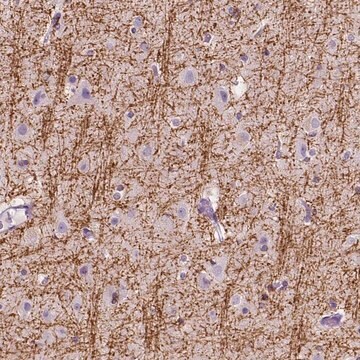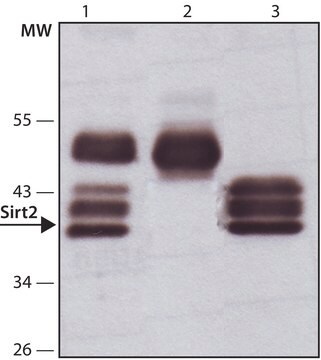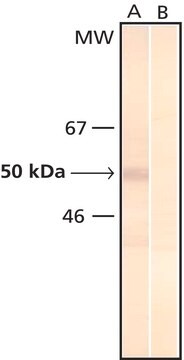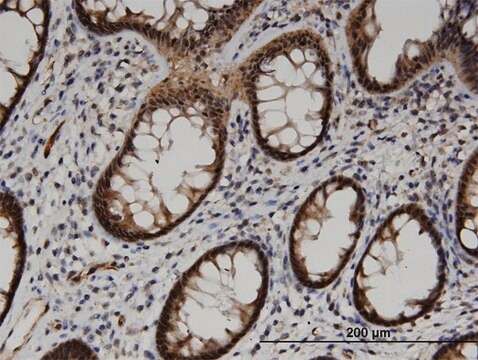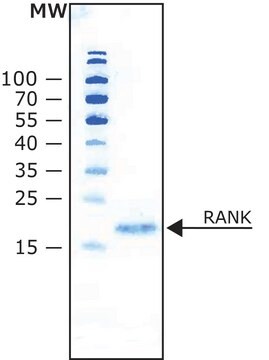Kluczowe dokumenty
S5313
Anti-Sir2 (AS-16) antibody produced in rabbit
affinity isolated antibody, buffered aqueous solution
Synonim(y):
Anti-SIR2, Anti-SIR2L1, Anti-SIR2alpha
About This Item
Polecane produkty
pochodzenie biologiczne
rabbit
Poziom jakości
białko sprzężone
unconjugated
forma przeciwciała
affinity isolated antibody
rodzaj przeciwciała
primary antibodies
klon
polyclonal
Formularz
buffered aqueous solution
masa cząsteczkowa
antigen ~110 kDa
reaktywność gatunkowa
mouse
opakowanie
antibody small pack of 25 μL
metody
indirect immunofluorescence: 1:50 using mouse NIH3T3 cells
microarray: suitable
western blot: 1:2,000 using mouse NIH/3T3 cells
numer dostępu UniProt
Warunki transportu
dry ice
temp. przechowywania
−20°C
docelowa modyfikacja potranslacyjna
unmodified
informacje o genach
mouse ... Sirt1(93759)
Opis ogólny
Specyficzność
Immunogen
Zastosowanie
- western blotting
- immunoprecipitation
- antibody microarray
Działania biochem./fizjol.
Postać fizyczna
Oświadczenie o zrzeczeniu się odpowiedzialności
Nie możesz znaleźć właściwego produktu?
Wypróbuj nasz Narzędzie selektora produktów.
Kod klasy składowania
12 - Non Combustible Liquids
Klasa zagrożenia wodnego (WGK)
WGK 2
Temperatura zapłonu (°F)
Not applicable
Temperatura zapłonu (°C)
Not applicable
Wybierz jedną z najnowszych wersji:
Masz już ten produkt?
Dokumenty związane z niedawno zakupionymi produktami zostały zamieszczone w Bibliotece dokumentów.
Nasz zespół naukowców ma doświadczenie we wszystkich obszarach badań, w tym w naukach przyrodniczych, materiałoznawstwie, syntezie chemicznej, chromatografii, analityce i wielu innych dziedzinach.
Skontaktuj się z zespołem ds. pomocy technicznej